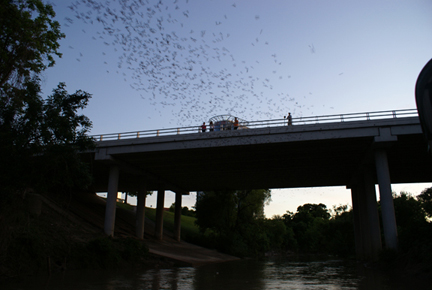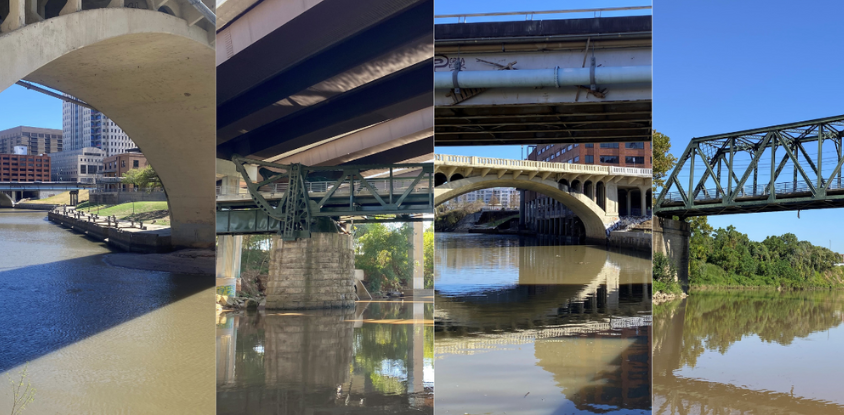Location
Along Buffalo Bayou between Sabine Street and US 59
Hours
Open Daily
Lighted areas: 6am–11pm
Other areas: Dawn to dusk
Buffalo Bayou Downtown is a historic center, a hub, and a connector. At the heart of this area is Houston’s birthplace and original port, Allen’s Landing. A center for trade and commerce, downtown Houston is also home to BBP’s administrative headquarters at the Sunset Coffee Building, as well as key trail connections that enable circulation between Buffalo Bayou Park and Buffalo Bayou East.
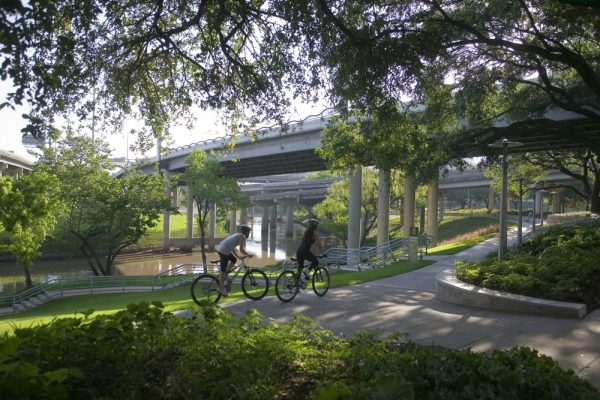
The Buffalo Bayou trail system winds through this 23-acre waterfront destination that lies just east of Buffalo Bayou Park. Visitors will find stainless steel boat sculptures by Houston artist John Runnels at major park entrances, BBP’s signature Lunar Cycle Lighting, and the Hobby Pedestrian Bridge, among other features.
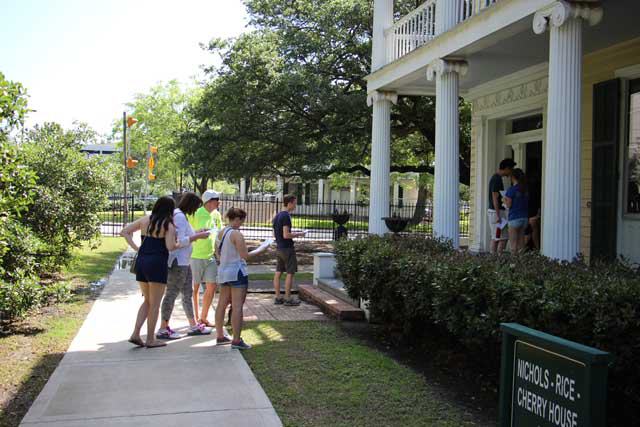
This historic park, created in 1899 by Mayor Sam Brashear, was originally landscaped like a Victorian village. Today it is home to The Heritage Society, an organization devoted to preserving a collection of Houston’s historic structures. Nine buildings have been restored and relocated to Sam Houston Park that together tell the story of Houstonians throughout the city’s past.
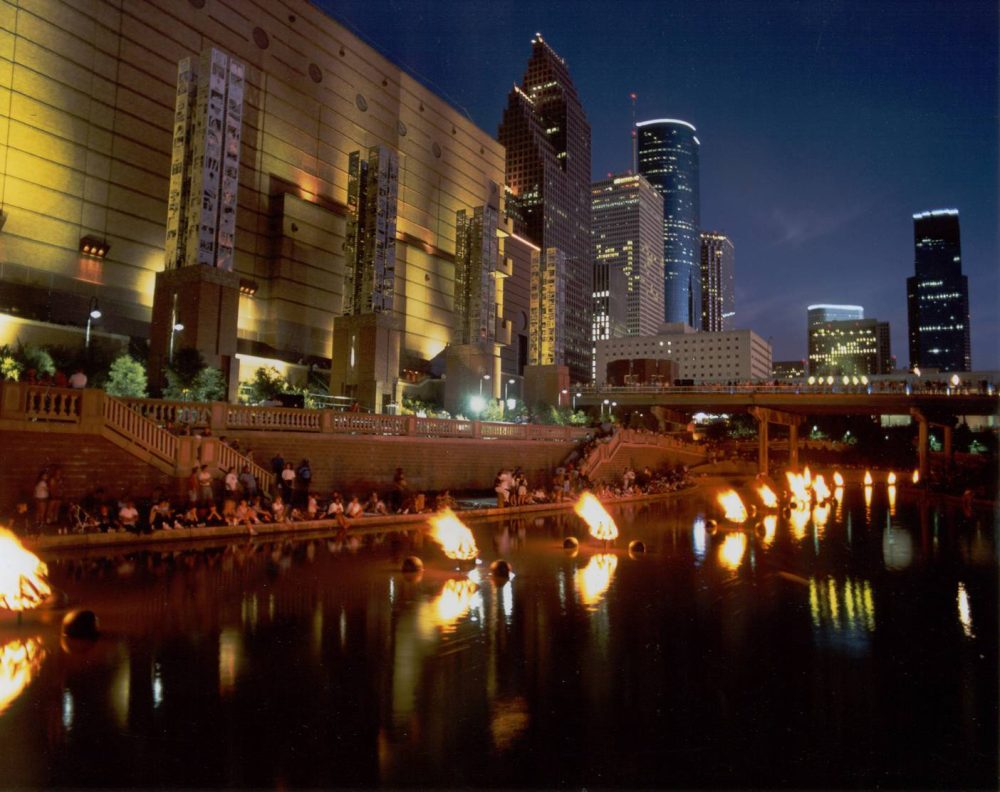
This 22-acre park is the centerpiece of downtown’s Theater District and commemorates Houston’s 150th birthday. Visitors can stroll along the promenade and take in the public art in the park, including artist Mel Chin’s monumental stainless steel pillars, Seven Wonders.
A bronze statue of former Secretary of State James A. Baker III gazes from the Baker Common across Buffalo Bayou at a statue of former President George H.W. Bush. North Carolina sculptor Chas Fagan created both statues.
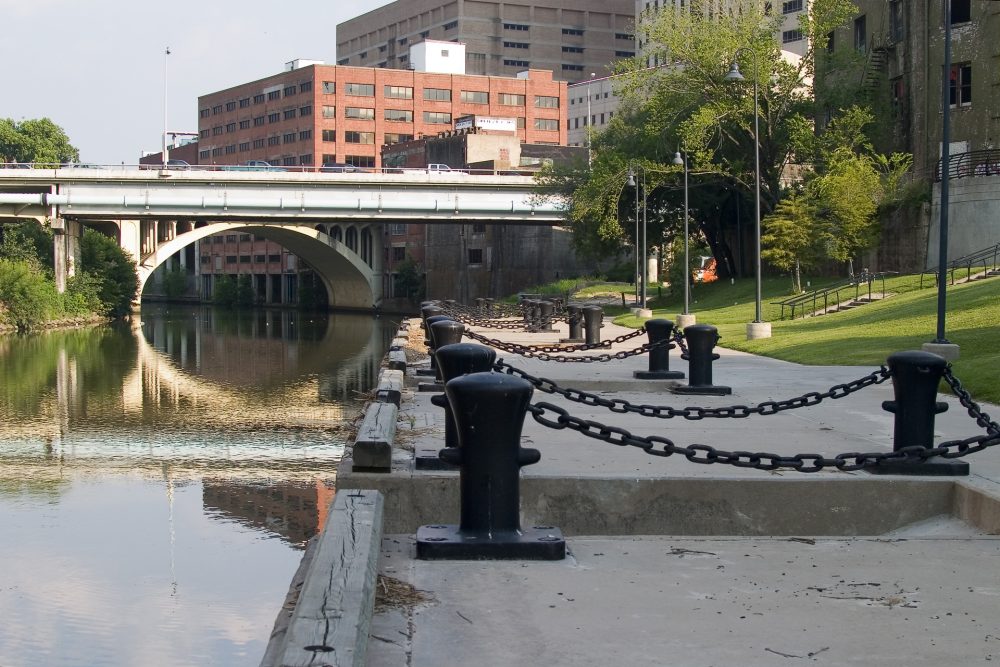
Allen’s Landing marks the spot where August Chapman and John Kirby Allen stepped ashore in 1836 and began the transformation of the area from swampy marshlands to the city we know today. This site, at the confluence of Buffalo and White Oak Bayous, became Houston’s first port and a thriving commercial hub. After years of neglect, BBP revitalized this historic site and park into an active waterfront destination. Stainless steel canoe sculptures by John Runnels grace the entrances to the space, and visitors can walk along the wharf where they will find public text art designed by local artist team, ttweak.

The Sunset Coffee Building at Allen’s Landing was built in 1910 by merchant William D. Cleveland to house his coffee roasting operations. It is one of the few remaining industrial buildings on Buffalo Bayou within downtown Houston’s Historic District.
BBP renovated the building in cooperation with Houston First. This industrial building houses BBP’s administrative offices as well as three unique event spaces available to rent, including an indoor space with a balcony overlooking the bayou, a large outdoor plaza, and an intimate rooftop terrace with stunning views of downtown.
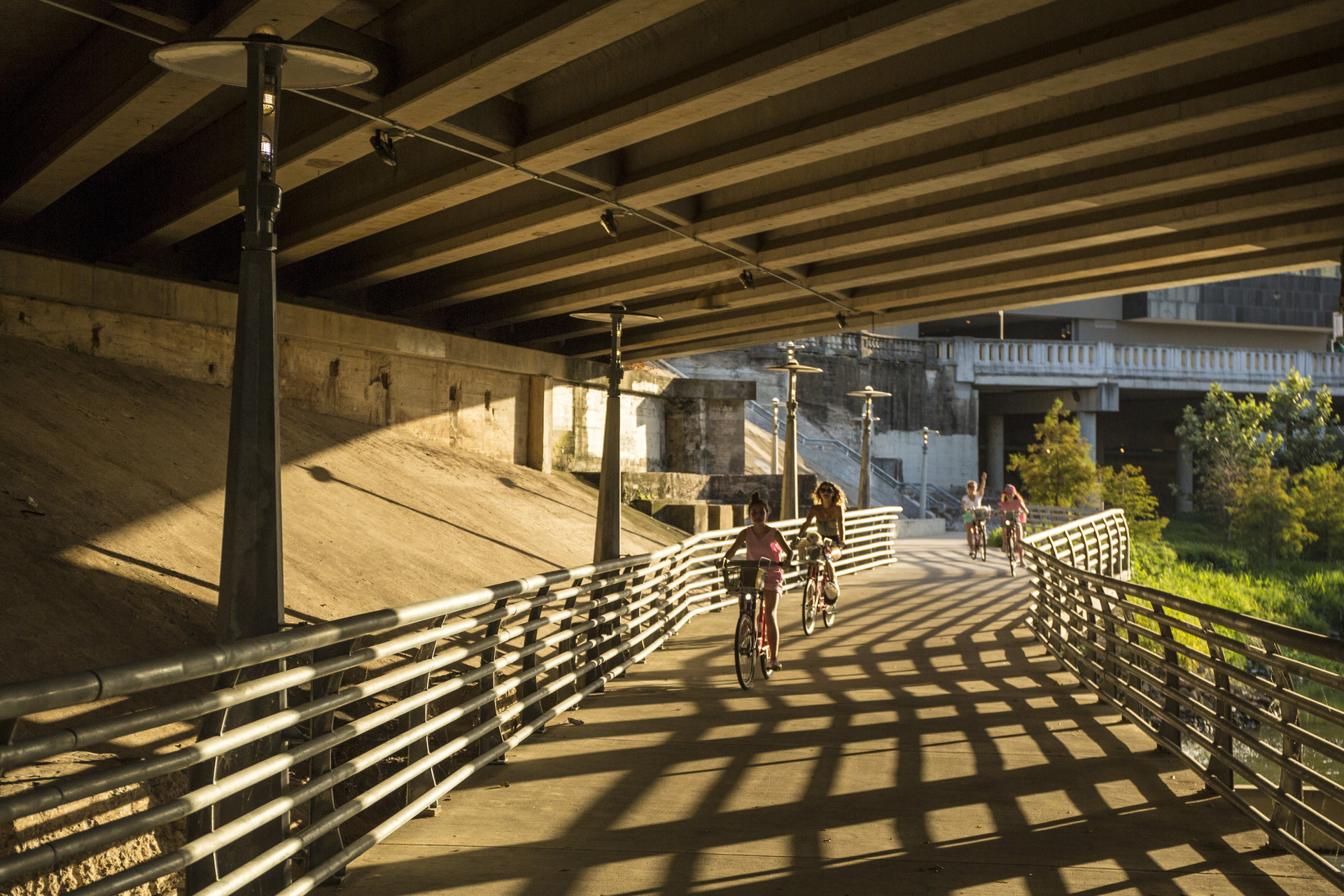
Buffalo Bayou’s hike and bike trail system weaves through downtown juxtaposing the urban center with its historic waterway, the built environment with the natural.
The innovative trail connection from Fannin to Austin Streets, more than a decade in the making, winds its way through the lower levels of two historic Harris County buildings, linking Buffalo Bayou Park with points east, connecting parts of the city that have long been separated. The iconic buildings represented along this trail portray the remarkable transformation of Houston’s downtown skyline by Gerald D. Hines and his firm. With the development of the 50 story One Shell Plaza in 1971, Houston began its journey to become one of the most architecturally rich cities in the country. Over the decades, Hines has continued to shape the skyline here in Houston and in cities around the world.


